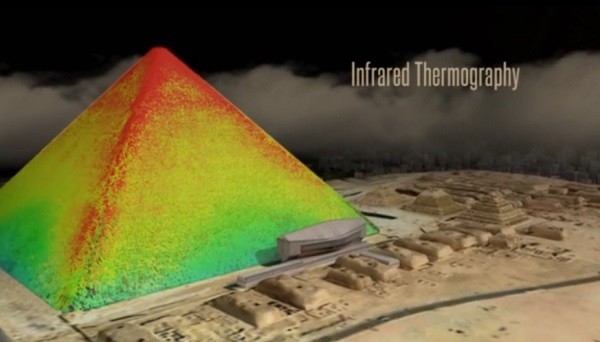On Monday, researchers revealed "anomalies" that were detected two weeks into new thermal scanning of the famous Giza pyramids in Egypt where several ones including a major anomaly was identified in the largest pyramid.
According to Antiquities Minister of Egypt, Mamdouh el-Damaty, technical experts who are working on this project detected thermal differences inside the pyramid during a live camera presentation to the press.
This scanning revealed a particularly impressive anomaly which is located in the eastern side of the Khufu pyramid on the ground level. This new thermal scanning was executed during sunrise where the sun can heat up the pyramid structures from the outside and another scanning was carried out during sunset when the pyramids are cooling down.
Researchers show that there are various rates of temperatures when it comes to the different parts of of the pyramids as they heated up and cooled down, pointing to a number of anomalies such as empty rooms and areas inside, internal air current passage ways and different building material that were used.
During the live camera presentation, different colors of blue to dark red indicated various temperatures inside the pyramid. Accoding to el-Damaty, the first row of stones are all uniform however there's a difference in stone formation in the pyramid as he pointed to three stones that showed higher temperatures.
As researchers were inspecting this area, the team found that there seems to be something like a small passage inside the ground that can lead up to the pyramids' ground that reaches an area with a different temperature, where the area is still unknown.
The minister is also inviting all Egyptologists and those who are much interested in Egyptian architecture to join their team in the research and help them discover and determine the origins of these pyramid anomalies.
Locally, the largest of the three Giza pyramids is known as Khufu but for the rest of the world it's called Cheops as the ancient structures are dated back to 4,500 years.



























